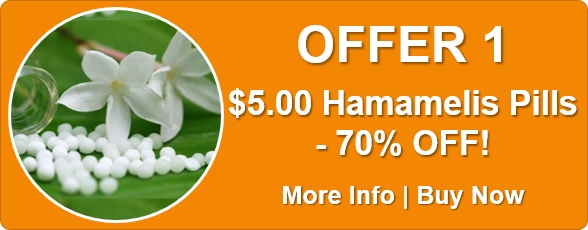The Top Four Remedies for Gardens and Farms
 Looking for something to keep the caterpillars off your veggies, snails away from your plants, and aphids off your vines? Homeopathy will do just that. It’s easy to use, saves you a heap of money and takes care of the environment. When used for plants it’s known as agrohomeopathy.
Looking for something to keep the caterpillars off your veggies, snails away from your plants, and aphids off your vines? Homeopathy will do just that. It’s easy to use, saves you a heap of money and takes care of the environment. When used for plants it’s known as agrohomeopathy.
In this article we discuss the top four agrohomeopathy remedies and tell you when and how to use them. We also link to Michelle’s story of when she applied the snail-deterrent remedy to her rhubarb, and the survey results from others when they used it as well. We have also included instructions on how to make the remedy yourself for virtually no cost, and if you scroll to the end of the article you will find more links to information on agrohomeopathy.
If you are a newcomer to homeopathy, this article is the perfect introduction as there is no easier way to see if it works than by testing it on the plants and soil in your garden – so let’s make a start.
Four Simple Remedies to Transform Your Garden
If you are a gardener (or farmer) you already know about the carnage snails, caterpillars and aphids inflict. Add the problem of water-repellent or poor soil, and plants literally start to die from the ground up. The good news is that the following four homeopathic remedies manage these problems and more for very little time and effort. Watch your plants thrive as you put them to good use in your garden.
1. Helix tosta – Slugs and Snails Gone for Up to Four Months
Snails and slugs are probably the most widespread of garden pests. Gardeners try to control them with everything from geese, salt, vinegar and beer traps to commercial baits or pellets. None of these methods provide a long-term solution, and the poisons within some baits and pellets introduce toxins into the environment that are dangerous to children and animals as well as the birds and lizards that eat the baited snails.
In contrast, Helix tosta, the homeopathic remedy made from toasted snail shell (of all things!) works quickly and safely. It’s simple to apply, long-lasting, and creates a stronger and healthier plant. Protection that last up to 4 months is in place from just one dose, even during the heaviest of downpours – and it doesn’t harm the environment. We know this to be true because one of our clinic homoeopaths, Michelle, tried Helix tosta on her snail-infested rhubarb. Read what happened in our Snails and Slugs Pack their Bags and Leave with Homeopathy article.
Following Michelle’s experience, we conducted a survey with some of our newsletter subscribers to find out what happened in their gardens when Helix tosta was used. Their results can be read at: Preliminary Responses from the Helix Tosta Survey and Helix tosta Survey Results
To celebrate our combined success, we provided instructions for those adventurous souls who wanted to make the remedy themselves rather than purchase it. The process is a relatively simple and you can read how to do it in the Snails and Slugs Pack their Bags and Leave with Homeopathy article.
And finally, we provided instructions on how to apply Helix tosta to your plants – homemade or not – at: Helix Tosta – Instructions for Use
Interesting Facts -Tuberculosis and the Humble Snail: Historically, the snail has been used in folk medicine to treat the symptoms of tuberculosis (TB). When homeopaths potentised the snail, turning it into a homeopathic remedy, they found it still helped TB sufferers – but it was obviously a little less “eeew-w-w!” Just as TB is a disease that destroys the respiratory organs (lungs) of the human body, the snail destroys the respiratory organ of the plant (its leaves). This similarity across symptoms is quite possibly a reason why it stimulates a positive response in both humans and plants.
2. Coccinella septempunctata – Goodbye to Aphids
Aphids pierce and suck the young shoots and buds of plants, feeding on the sap and stunting growth. Aphids, unlike our Helix tosta example, cannot be repelled by potentised aphid – it has been tried in numerous ways and has always failed. It took a while to discover that a potentised aphid predator, the ladybird, was an effective deterrent.
Coccinella septempunctata is the homeopathic remedy made from the ladybird beetle (sometimes called ladybug, ladybeetle, or sunchafer). Ladybird is a natural predator of the aphid. It also deters or reduces aphid populations when applied as a homeopathic remedy, even though none of the ladybird remains within the remedy. Good and prolonged results are usually obtained with just one dose – occasionally a second dose is required, but care should be taken not to apply it more often than is needed as unnecessary applications will have the opposite effect and encourage aphid infestations.
Instructions for using Coccinella are provided toward the end of this article.
3. Bombyx processiona – Caterpillars Crawl Away
Bombyx processiona is a remedy prepared from the Procession Caterpillar.This remedy deters most types of caterpillar infestations on the farm or in the garden.
Procession Caterpillars live in colonies at the base of trees. During the day they climb the tree to eat its foliage. Once it has been stripped bare they will crawl in single file – in a procession – to the next tree. When Bombyx processiona, the remedy prepared from these caterpillars, is sprayed onto plants or watered into their root system, they naturally repel those moths and caterpillars that would normally infest them. There is no remedy residue that acts as a barrier. Instead, just as with humans, the remedy triggers a healthy response from the plant that makes it more resistant and less appetising to parasites that would normally attack it if it were in a less healthy state. And, of course, what is good for the plant ends up being good for us when we eat or use it.
Instructions for using Bombyx are provided toward the end of this article.
4. Silicea terra – King of the Garden Remedies
Perhaps the most important remedy in agricultural homeopathy is Silicea terra. No other remedy can lay claim to the depth and breadth of action Silicea has on plants and soil. It:
- Aids germination of seeds
- Reduces transplant shock
- Strengthens weak and spindly plants
- Increases vigour and resistance of plants to pests, moulds, and mildew
- Aids water retention in plants growing on arid soils
- Stimulates flower growth, both in number and size
- Assists seed generation and development
- Improves fruit-setting when applied after flowering
- Changes the ionisation of soil particles so that water-repellent soil more readily absorbs moisture … and more!
In fact, the effects and benefits of homeopathic Silicea are so numerous that an entire article has been devoted to them at: Homeopathic Silica – The Gardener’s Friend. Needless to say, Silicea is one remedy no gardener or farmer should be without.
Instructions for using Silicea are provided toward the end of this article.
Instructions for Agrohomeopathy Remedy Use and Storage
Just add one 6X or 6C potency pill to 200 ml of water, shake vigorously, and then spray on the leaves of your plant or water into its roots (many say watering the soil above the plants roots with some of the liquid is more effective than spraying the liquid onto the leaves).
Store pills and liquid away from light, moisture, and high temperatures (normal household temperatures are fine). Close range mobile phone and microwave oven emissions have been shown to affect homeopathic remedies, so keep your pills and liquid away from these appliances.
One vial of 100 pills makes 20 litres of remedy.
(Agrohomeopathy remedies are available from the Homeopathy Plus Shop)
Time to Get Started
So, it doesn’t matter whether you are a beginner or long time user of homeopathy – if you have not yet used it for your garden or plant problems, there is a whole new world waiting to be explored – give it a try!
More Information and Resources
Agrohomeopathy: An Introduction to Healing Plants and Planet with Homeopathy
From Hippy to Homeopath: the Story of Vaikunthanath das Kaviraj
Helix Tosta Questions Answered





